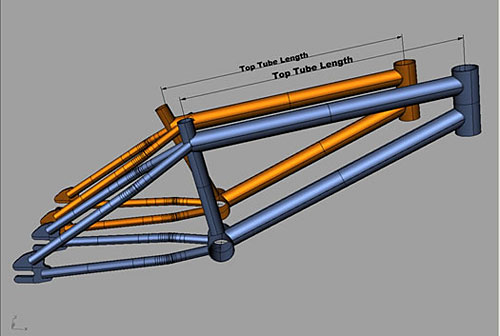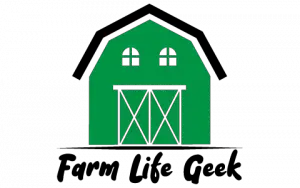To measure a BMX bike frame, you will need to use a tape measure. You will need to measure the top tube length, which is the distance from the center of the head tube to the center of the seat tube. You will also need to measure the seat tube length, which is the distance from the center of the bottom bracket to the top of the seat tube.
- Decide which size you need
- The two most common BMX bike frame sizes are 20″ and 24″
- Measure the top tube length
- This is the distance between the seat tube and the headtube, and is usually given in inches
- Measure the chainstay length
- This is the distance between the bottom bracket and the rear axle, and is also usually given in inches
- Compare your measurements to a size chart to determine which size frame you need
BMX BIKE FRAME MEASUREMENTS AND GEOMETRY!
What Size is My Bmx Bike?
There are a few things to consider when trying to determine the size of your BMX bike. The first is the type of riding you’ll be doing. If you’re planning on doing mostly street riding, then you’ll want a smaller bike with a shorter wheelbase.
For park and ramp riding, you’ll want a slightly bigger bike with a longer wheelbase. The second thing to consider is your height and weight. Generally, taller riders will want a bigger frame, while shorter riders will want a smaller frame.
Heavier riders will also want a sturdier frame that can handle their weight, while lighter riders can get away with a lighter-weight frame.
Once you’ve considered those two factors, it’s time to start looking at specific sizes. For street riding, most riders will want a 20″ or 21″ top tube length.
For park and ramp riding, most riders will want a 21″ or 22″ top tube length. Again, these are just general guidelines – it’s always best to test ride different bikes before making your final decision on which one is right for you.
What Age is a 20 Inch Bmx Bike?
There is no definitive answer to this question as it depends on a number of factors, including the height and build of the child, the type of BMX bike, and the child’s riding style. However, as a general guide, we would say that a 20 inch BMX bike is typically suitable for children aged 8-12 years old. If your child is on the taller or shorter side for their age then you may need to adjust this slightly.
For instance, if your child is tall for their age then they may be able to ride a bike with a larger wheel size, such as a 21 inch BMX bike. Equally, if your child is smaller than average then they may be more comfortable on a smaller bike such as an 18 inch BMX bike. Ultimately, it is important to choose a bike that your child feels comfortable and confident riding.
If you are unsure which size bicycle to select then we recommend visiting your local bicycle store where knowledgeable staff can help you make the best choice for your child.
What Size is a 20 Inch Bmx?
A BMX bike typically has 20″ wheels, which are smaller in diameter than those on a mountain bike or road bike. The smaller wheels make the bike more maneuverable and lighter weight, which is ideal for tricks and stunts. If you’re thinking about buying a BMX bike, be sure to measure your inseam (the distance from your crotch to the ground) to ensure that you’ll be able to ride comfortably.
To get an idea of what size BMX bike you should get, here’s a rough guide based on rider height:
Rider Height (in.) BMX Bike Size (in.)
4’8″ and under 20″
4’9″ – 5’2″ 20″ or 21″
5’3″ – 5’6″ 21″ or 22″
How Do I Find My Bike Frame Size?
There are a few different ways that you can find your bike frame size. The first way is to look at the sizing chart for the specific bike that you are interested in. This will usually be located on the manufacturer’s website.
Sizing charts will list the measurements for each size of frame, so you can compare your own measurements to find the right size for you.
Another way to find your bike frame size is to measure your inseam. To do this, simply stand against a wall with your feet about shoulder width apart and measure from the floor up to your crotch.
Once you have this measurement, you can consult a sizing chart (again, found on most manufacturers’ websites) to determine which frame size will be best for you.
Finally, if you’re still unsure of what size bike frame to get, it’s always best to go into a local bike shop and talk to an expert. They’ll be able to take your measurements and help you choose the perfect sized frame for your needs.

Credit: odysseybmx.com
Bmx Frame Size for 5’11
If you’re looking for a BMX frame size for a 5’11” rider, you’ll need to consider a few things. First, what is your inseam? Second, what is your riding style?
Third, what type of bike do you want?
The most important thing to consider when choosing a BMX frame size is your inseam. Your inseam is the distance from your crotch to the ground.
To measure your inseam, use a tape measure and stand with your feet about shoulder width apart. Place the end of the tape measure at your crotch and pull it down to the ground. Make sure to keep the tape measure level as you do this.
Once you have your inseam measurement, you can start looking at BMX frames.
Most BMX frames are sized by their top tube length. The top tube length is measured from the headtube to the seat tube junction.
For a 5’11” rider, you’ll want a frame with a top tube length of 21″-22″. If you have a longer or shorter inseam, you’ll need to adjust accordingly. A longer inseam will require a longer frame, while a shorter inseam will require a shorter frame.
Your riding style also plays into choosing the right BMX frame size for you. If you’re planning on doing mostly street riding or park riding, then you’ll want a smaller framed bike. This allows for better maneuverability when doing tricks and grinding on rails or ledges.
If dirt jumping is more your thing, then you’ll want a slightly bigger framed bike that can take some hard landings without breaking itself (or your back). Again, it’s all about finding that happy medium between too big and too small based on how and where you plan on riding.
Finally, what type of bike doyou want? There are three main types of BMX bikes- race bikes, freestyle bikes ,and cruiser bikes . Race bikes are designed for racing around an oval track . They’re lightweight with thinner tires so they can accelerate quickly out of turns . Freestyle bikes are designedfor street and park riding . They’re tough enoughto withstand repeated abuse from grinds and flips , but not so bigthat they become cumbersome . Cruiser bikesare somewherein between race and freestylebikes . They’re goodfor general cruising around town , but can also handle some light stuntsand jumps .
Bmx Bike Size Chart by Height
If you’re in the market for a BMX bike, one of the first things you’ll need to do is figure out what size bike you need. This can be a tricky process, because BMX bikes are sized differently than other types of bicycles. In general, BMX bikes are sized by their top tube length.
The top tube is the horizontal bar that runs from the handlebars to the seat.
The easiest way to figure out what size BMX bike you need is to use a sizing chart. You can find these online or at your local bike shop.
Once you have your height and inseam (the distance from your crotch to the ground), simply match up your measurements with the corresponding bike size. For example, if you’re 5’6″ with a 29″ inseam, you would need a 20″ top tube length bike.
Of course, there are always exceptions to the rule.
If you’re planning on doing serious tricks or racing competitively, it’s always best to consult with an experienced BMXer or coach before making your final purchase. They’ll be able to help you choose a bike that’s just right for your skill level and riding style.
How to Measure Bmx Wheel Size
When it comes to BMX, wheel size is everything. The wrong size wheels can make your bike feel sluggish and slow, while the right size wheels can make your bike feel fast and responsive. So how do you know what size wheels to choose for your BMX bike?
There are a few things you need to take into consideration when choosing the right sized wheels for your BMX bike. First, you need to know the measurement of your frame. This is important because you want to make sure the wheels you choose will fit properly onto your frame.
Second, you need to decide what style of riding you’ll be doing most often. If you’re mostly going to be doing street riding, then you’ll want slightly smaller wheels so they’re easier to maneuver around obstacles. If you’re mostly going to be riding on dirt tracks, then you’ll want slightly larger wheels for more stability and speed.
Once you have those two factors figured out, then it’s time to start shopping for BMX wheels! There are a few different places where you can buy BMX wheels, but we recommend checking out our online store first. We carry a wide selection of both front and rear BMX wheels in a variety of sizes so finding the perfect set for your bike should be a breeze!
Bmx Bike Size Calculator
Do you want to buy a BMX bike, but don’t know what size to get? Use our BMX Bike Size Calculator to figure out what size frame will be best for you. Just enter your height and we’ll give you all the info you need!
If you’re on the taller side, or just prefer a bigger bike, go with a 20″ top tube. If you’re shorter, or looking for a more maneuverable ride, go with an 18″ top tube. either way, we’ve got you covered!
Just enter your height into our calculator and we’ll do the rest.
We’ll even tell you what size tires we recommend for each frame size. So whether you’re tall or short, big or small, we can help you find the perfect BMX bike for your riding style!
Conclusion
In order to measure a BMX bike frame, you will need a tape measure and a friend to help you. First, have your friend hold the end of the tape measure at the top of the head tube. Then, run the tape measure down the length of the front fork and stop at the point where it meets the ground.
Next, have your friend hold the end of the tape measure at the center of the bottom bracket. Run the tape measure up to where it meets the seat tube, and then continue measuring up to where it meets the top tube. Finally, have your friend hold the end of the tape measure at the back end of the seat stay.
Measure from there until you reach where it meets with chainstay before continuing on to measure from that point until you reach where The rear dropout meets with The axle .
